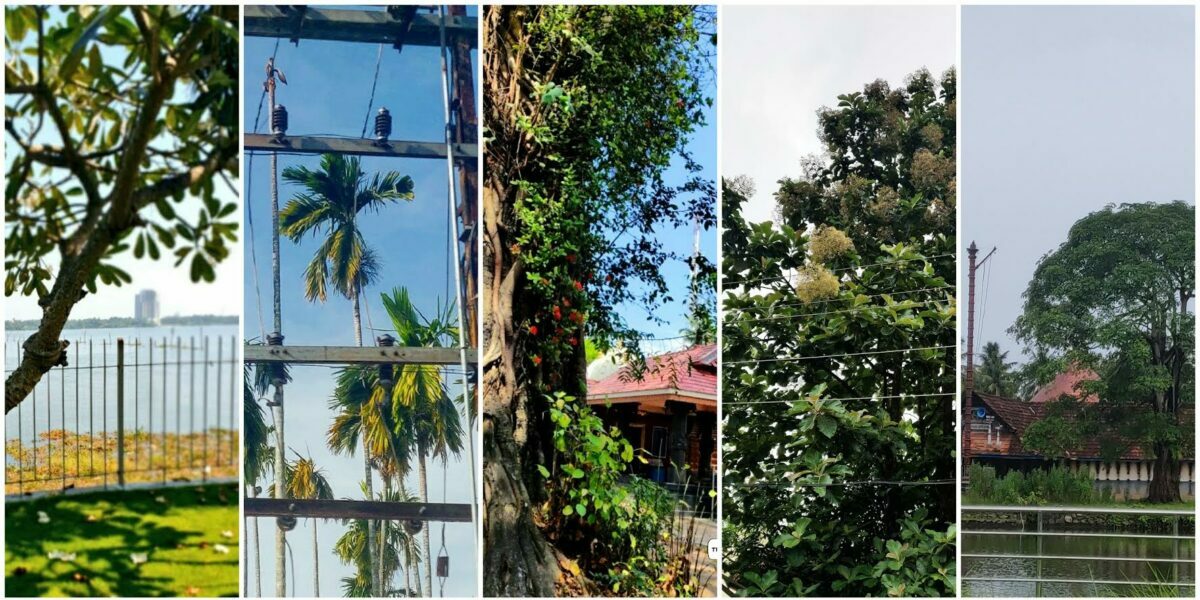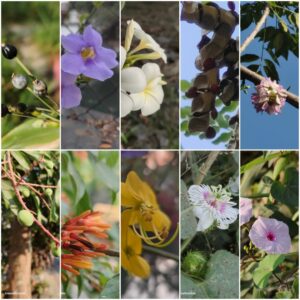Aswathi Jerome’s Instagram page, Trees of Cochin, details the discovery of rare and lesser-known trees of Kochi and other cities.

Trees of Cochin offers its followers crucial information about a tree’s life and times, and its role in the lives of Kochiites. (Supplied)
Aswathi Jerome has always loved trees — growing up having siestas under the tamarinds and secret discussions up among the guavas during her summer vacations at her maternal home in Kerala’s Kottayam district, on the banks of the Vembanad.
“My love for nature springs from my upbringing; my parents love their plants. Growing up, we always had a thriving garden at home,” remembers Jerome, a researcher with a background in Humanities and the Social Sciences.

Aswathi Jerome (Supplied)
Once, when Jerome was little, her parents threw a party at their Kochi home for their guests to watch and celebrate the “nishagandhi” (Epiphyllum oxypetalum) bloom. “Nineteen flowers bloomed that night,” she shares.
Jerome’s mother studied Botany, therefore, using botanical terminology while discussing plants was common at home.
“Calling a custard apple Annona squamosa comes naturally to us. As children of this house, we gathered plenty of details related to nature unconsciously, which I realise in hindsight,” she says.
“My grandfather used to assign trees to each of us cousins, so we took better care of them,” she recalls holidays spent in Kottayam.
All that is a memory now, not because she has moved on, but because Kochi gradually lost its green lung.
“I returned to the city about five years ago and saw that it had changed — there were new roads, buildings, flyovers, bridges, and malls. The Kochi Metro Rail construction had changed the contours of the city I was familiar with. And finally, the floods of August 2018 shut down the state for nearly a month, and changed the landscape a little more,” she rues.
Right after the deluge of 2018, Jerome came across a hashtag challenge on Instagram called #FiftyTrees, which invited people to post a photo of a tree along with the hashtag and a suitable caption.
Jerome posted photos of more than 100 species of trees from in and around Kochi, and from all the places she had travelled to between September and December 2018.
“Many trees were familiar, many more were unfamiliar. I started to know them better, starting with their names through this unofficial group the hashtag had inadvertently created,” she told South First.
It was out of this group that Jerome created an Instagram page, Trees of Cochin (TOC), which now has close to 3,000 followers.
By January 2019, the leafy trees began to bloom, flowers turned to seeds, and there were new leaves. “I clicked the same tree on different months from then, to observe the changes. These observations started to pile up in my notes and by the beginning of the pandemic in 2020, it had grown into a zillion notes scattered everywhere across my online and offline spaces,” she reminisces.
Jerome had already started putting these pictures and related information on her Trees of Cochin page on Instagram.
She began writing about the trees for her personal use, to ensure her years of scattered notes found structure and expression.
“But the page isn’t restricted to my city and state, although the name of the page is related to the city I live in. The page lists every plant I find, it isn’t only about trees either. Over the years, ToC has become a platform that revels in what has come to be known as plant humanities, an interdisciplinary study of nature, in collaboration with other nature enthusiasts.”
“The hashtag helped me rediscover Kochi,” she says about #FiftyTrees.
But it also gave Jerome, a consultant and a trainer for digital marketing and advertising, a new way to rediscover her beloved trees.
On a regular day, you will find her endlessly browsing through many online sources to find a deeper meaning behind every tree she encounters.
“Earlier, I used to misspell Bauhinia (orchid tree). But when I figured that Bauhinia comes from the surname Bauhinia of the Swiss brothers Casper and Jean, who wrote treatises in Anatomy and Botany, the spelling fell in place,” she explains.
This spelling search has taken Jerome back to a 16th-century European discourse on plants, nomenclature, herbaria, and botanical illustrations of physicians.
“This time frame also intersects with the age of reason, the scientific vigour to document our history of colonialism and trade relations with the East India companies,” she says, to explain how many of the names for Indian trees came into use.
Trees of Cochin offers its followers crucial information about a tree’s life and times, and its role in the city’s stories. Jerome thinks initiatives like these should be encouraged to safeguard these old, tall, and magnificent trees of India.
“Projects such as Trees of Cochin can foreground trees and bring an entire knowledge system and awareness among the public,” she adds, “In the process, the information, history, the present, controversies, and memories are all documented and safeguarded.”
As part of the initiative, Jerome also holds tree walks. She asserts that once you attend these walks, it is difficult to ignore any tree in the city.
During the walks, she uses nature to talk about urban biodiversity and ecology. But when it comes to introducing trees to her audience, the medium varies with the participating group.

Jerome’s Walk in the Neighbourhood (WIN) is a monthly project to help people understand how as residents they should respond to nature in the city. (Supplied)
“To find the link for people to connect with is the key,” she says and adds, “For example, it is easier to talk to children below the age of 10 years through games and activities.”
With adults, the link could be local and regional festivals, managing household waste, the increasing city temperature, climate changes, nature preservation, one’s curiosity about a tree, gardening, composting, and the heritage and history of a land.
“Most participants return with stories of trees they spotted and how they made a connection with them,” says Jerome.
Her Walk in the Neighbourhood (WIN) is a monthly project to help people understand how as residents they should respond to nature in the city.
Jerome wants to write a book on the environmental history of Kochi. That, she says, would be a “good addition” to Trees of Cochin.

Apr 28, 2024

Apr 25, 2024

Apr 25, 2024

Apr 24, 2024

Apr 24, 2024

Apr 24, 2024